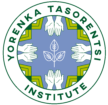In October, during the second day of the Institute-hosted conference titled “Dialogues on border territorial protection strategies in the Upper Juruá / Yurua / Upper Tamaya” (Brazil-Peru),” the Ashaninka community Apiwtxa, along with the Sawawo and Dulce Gloria communities, donated 300 “tracajás,” commonly known as yellow-spotted river turtles that are native to the region, to be bred, conserved and repopulated. This act is a testament to the ongoing collective efforts for regional wildlife preservation.
The yellow-spotted river turtle, among the largest South American river turtles, can weigh up to 8kg and boasts a lifespan of up to 30 years. Unfortunately, this species experienced severe exploitation during the American pet turtle trade in the 1960s, leading to a drastic decline in population and subsequent importation bans. Ongoing breeding and conservation efforts by the Asháninka people significantly impact the preservation and regeneration of Amazonian wildlife.
Since 1995, Benki and the Apiwtxa community have been exemplary in their commitment to the rewilding and local management of the tracajás population. Their efforts have successfully contributed to the recovery of river populations and the overall biodiversity of the region. To date, more than 15,000 tracajás have been reintroduced into the rivers.
Photograph by Stella Ismene showing an Ashaninka upholding one of the donated turtles.

